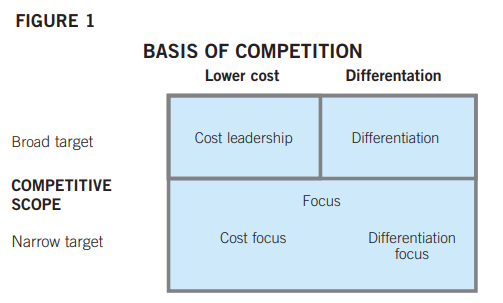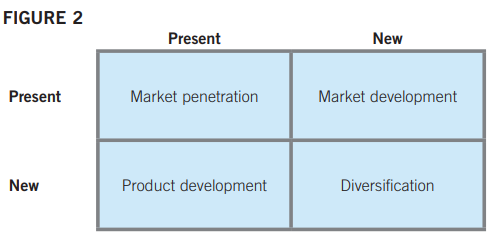August 2020
Top tutor Sean Purcell explains the three steps to understanding the strategic planning process…
One of the main problems students have when studying strategy is understanding how the process of strategy links together. The process can be distilled down into three main areas and they are:
1: Strategic analysis.
2: Strategic choice.
3: Strategic implementation.
Strategic analysis
Essentially, a business needs to address the following questions:
• Where do we want to go?
• What constraints exist on our resources?
• What are the key threats from the external environment?
The answer to the first question is influenced by the stakeholder dynamics of the organisation.
Key influencers are often the owners (for example shareholders) who may have a particular expectation for the organisation. Others could include the government, employees and the general underlying culture of the organisation.
When it comes to the constraints that exist on our resources, you need to look at finance, plant and machinery, and human resources.
However, to make it easy, I would recommend that you simply think 6Ms. 6Ms is simply a mnemonic used to save time when thinking about the various resource constraints. It can be summarised as:
• Money.
• Machinery.
• Manpower.
• Markets.
• Materials.
• Make-up.
Now let’s identify the key threats from the external environment. Once we have established constraints on our internal resources we need to assess the threat posed by the external environment. The easiest way to assess the external environment is to use the following two frameworks:
• Porter’s five forces.
• PESTEL analysis.
Porter’s five forces: The American management writer Michael Porter describes the main external competitive threats to be summarised by his five forces model. Essentially, this model determines the level of competition an organisation is facing by assessing the extent to which the five forces are relevant. These are summarised as follows:
1: The threat from new entrants.
2: The bargaining power of buyers.
3: The bargaining power of suppliers.
4: The threat from substitute products.
5: The extent of competitive rivalry.
PESTEL factors: The other framework that should be applied when surveying the external environment is PESTEL factors:
• Political.
• Economic.
• Social.
• Technological.
• Environmental.
• Legal.
Therefore, when surveying the external environment think through Porter’s five forces and PESTEL factors and you will have a fully comprehensive framework with which you can assess the case.
Strategic choice
When making a strategic choice we can break the process into three distinct subheadings, which are:
• On what basis do we decide to compete?
• Which direction should we choose?
• How are we going to achieve the chosen direction?
A useful framework to use when deciding on what basis we decide to compete is Porter’s generic strategies. Michael Porter stated that a firm that is wishing to obtain competitive advantage over its rivals is faced with two choices:
Choice 1: Is the company seeking to compete by achieving lower costs than its rivals achieve and by charging similar prices for the products and services that it offers, thereby achieving advantage via superior profitability?
Or is the company wishing to differentiate itself, and the customer is prepared to pay a premium price for the added value which the customer perceives in the product, and thereby enjoys greater margin than the undifferentiated product.
Choice 2: What is the scope of the area in which the company wishes to obtain competitive advantage? Is it industry-wide or is it restricted to a specific niche?
The answers to these two choices leave the organisation faced with three generic strategies, which are defined as:
1: Cost leadership.
2: Differentiation.
3: Focus.
This can be summarised in the following diagram: – see Figure 1.

We stated that the alternative directions available to a business could be described in general terms as follows:
1: Market penetration.
2: Product development.
3: Market development.
4: Diversification.
Market penetration
This involves increasing the market share in the current market with the current product. Market share can be enhanced by such techniques as improved quality, productivity or increased marketing activity.
Product development
This involves introducing a new product into the current market. The product change is often the result of changes and modifications to an existing successful product – for example, Mars ice cream. This is an alternative to the present product and builds on present knowledge and skills.
Market development
In this case the organisation keeps its tried and tested products but aims to apply them to different market segments. This strategy maintains the security of the present product while enabling extra revenue to be generated from new segments – for example, McDonald’s and its geographic market development.
Diversification
This is the riskiest of the product market strategies as it involves the introduction of a totally new product in a new market. Diversification can either be related or unrelated. Ansoff represented the last four choices in his product/market matrix (Figure 2).

The final problem that must be overcome is to decide how the chosen strategic option should be undertaken.
The options available are:
• Internal development.
• External development/acquisition.
• Joint development.
Internal development
Reasons: Often undertaken to maintain the present equilibrium within the company as it is much less disruptive than an acquisition.
Another reason may be that there is not sufficient finance available for an acquisition, or that the government may prevent acquisition/merger through legislation.
Acquisitions
If there is sufficient finance available an acquisition, will provide a very quick way of providing access to new product/market areas and the new organisation will have economies of scale advantages.
Joint development
A formal agreement between two or more organisations to undertake a new venture together – for example, Airbus (spreading of cost). Look again at Figure 1.
Once all the alternative options have been generated, we need to evaluate their appropriateness before making a choice. A useful framework to apply when considering the appropriateness of an option is:
• Suitability.
• Feasibility.
• Acceptability.
Suitability
Suitability identifies the extent to which the proposed strategy enhances the situation identified in the strategic analysis. The following questions need to be addressed about the strategic options:
• Does it close the planning gap?
• Does it address threats and weaknesses?
• Does it build on identified strengths and exploit opportunities?
• Does it fit in with the organisation’s mission?
Feasibility
The issue of feasibility evaluates whether the chosen strategy can be implemented successfully. The resources the organisation has at its disposal will obviously determine this. To save time, simply think about the 6Ms.
Acceptability
The final issue to address is whether the selected strategy will meet the expectations of the key stakeholders in the firm and typical issues to be looked at would include the level of risk and return resulting from the option.
Remember that exam questions will normally touch on some part of the process we have described and if you have an in-depth understanding of everything that we have covered you will be able to construct much more comprehensive arguments in the exam.
Strategic implementation
The area of strategic implementation covers many areas but it is possible to simplify the issues in to a number of key sub-headings:
• Project management.
• Organisational structure.
• Management of change.
Hopefully you are now able to overview the strategic planning part of the syllabus in a more systematic and logical way. All you need to remember is the key steps of strategic analysis, choice and implementation. This should then set off another chain of words in your head, such as: ‘All that is necessary now is to use the framework in an applied way relevant to the question asked.’
• Sean Purcell, of WiseUpNow, is the current PQ magazine Private Sector Tutor of the Year. He is also an ACCA guru for the SBL exams.
Check out Sean Purcell’s ‘Back to Basics’ video on the Strategic planning process.




